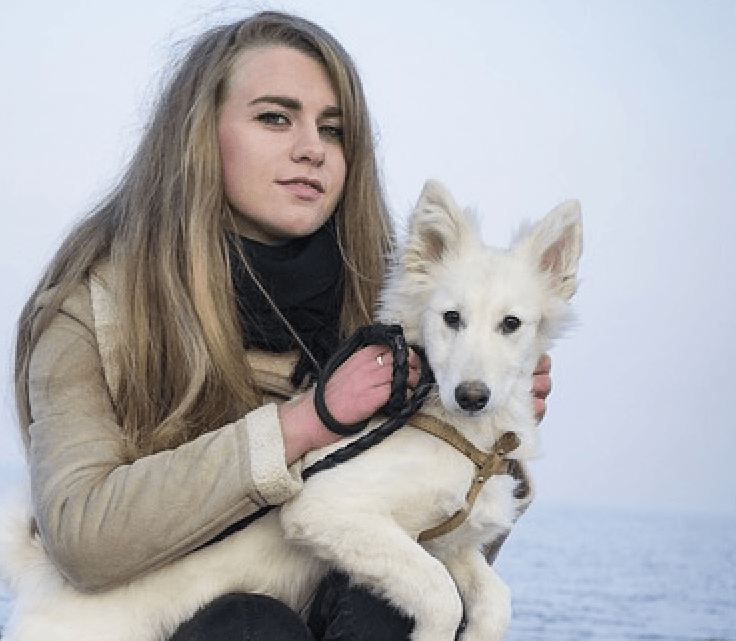Whenever I get a new puppy, priority number one is always good socialization. A very close second priority is good manners. My ideal dog is happy to greet people while at the same time, not jumping all over them. I'm sure you want the same thing.
We know it can be a struggle trying to find a balance between the need for early socialization and the desire for good manners. If you struggle with these things, you're far from alone, but rest assured that you can have a happy dog with good manners too! Golden rule #1 in dog training is that dogs learn best what they learn first! None of us want to correct a puppy during early socialization at the risk of creating a bad association with new people, or people in hats, or men... One event learning is a real thing and we don't want our dogs to become frightened by an associated correction. The truth is, with a bit of work and forethought, you can have both a well socialized and well mannered dog. Pay attention to two simple steps:
- Prevent bad habits to begin with
- Teach an alternate behaviour
Here's how!
Prevent Bad Habits
One of my favourite parts of having a young pup is that I can pick them up. Whenever I have a new puppy, while they are greeting people, I keep them up in arms so that it's easy to prevent them from developing the bad habit of jumping up. Golden rule #2 in dog training is simple: dogs do what's rewarding! If your puppy learns that they get to the rewarding part of the human, the face, by jumping up, they'll learn to jump up in order to reward themselves. I like to have a baby puppy up in arms so I can help them get social with new people without them needing to jump up. Is your puppy a large breed and to heavy for lifting to be practical all of the time? No problem. Have people get down to your dog's level before you let them say hello. However you do it, you want to stop bad behaviours from developing rather than having to try to fix them later. Nip those bad habits in the bud using prevention.
Teach an Alternative behaviour
This is truly the key to success. Create an alternate behaviour in your dog, like sit, which is counter to them jumping up. This will solve 90% of your problem. If your young dog learns to sit consistently for attention, they won't, or rather they can't, jump up! How nice will it be if your dog learns to sit for attention rather than jump? So how do we get them this message?
Teaching your dog to sit
Get out your best rewards. You need your pup to learn that sitting is a great thing. I know it's easy to take sit for granted; assuming that sit is so obvious and easy, your pup must understand it. Don't gloss over sit! You risk creating a fundamental hole in your training by having an important command that your dog only partially understands. What should sit mean to your dog? We want you to have high criteria and expect that sit means sit and hold position until you release your pup - regardless of the distractions they're presented with. You really can't spend too much time teaching sit. Teach and engrain the idea of longevity and stability in the sit position. Then add distractions to your training and reward the dog with their favourites when they make good choices.
Teach your dog to say hello in the sit
Once your dog has learned to hold the sit position, start to add the greeting portion of the exercise to their training. Initially, make it simple for them. You can even start with a person just approaching or standing nearby as you reward the dog for holding the sit. Remember to use their favourite rewards. Make it tougher slowly and keep the reward value high as the greeting gets more exciting. Progress from a person nearby to a person speaking to the dog to a person touching the dog, etc.
Generalize your training over different environments

Once you've taught your dog to sit for greeting, we want you to move their training around to different locations and situations. I always find pups have a hard time at the front door at home. When the doorbell rings, excitement begins! Training in this situation is invaluable to helping your dog understand. Initially, take the time to set this up with other people in the home, or people your dog is already familiar with and they aren't super excited to see. Start by having the person stand in the doorway with the door closed. Progress to an open door. Next, have them ring the bell with the door open. Then go through the ritual of a closed door, bell rings, door opens. Teaching when the situation is set up and under your complete control will help create and reward success. Don't wait until a real guest rings the bell to train, but since this situation is likely to occur, be prepared for it. This sign, for example, is one of the best ideas we've seen for a young pup in training. What fabulous planning!
In the end, it can't be said enough: Dogs do what's rewarding! If you set the scene to your advantage, your dog will learn to have both good social skills and good manners.
Happy Training!

